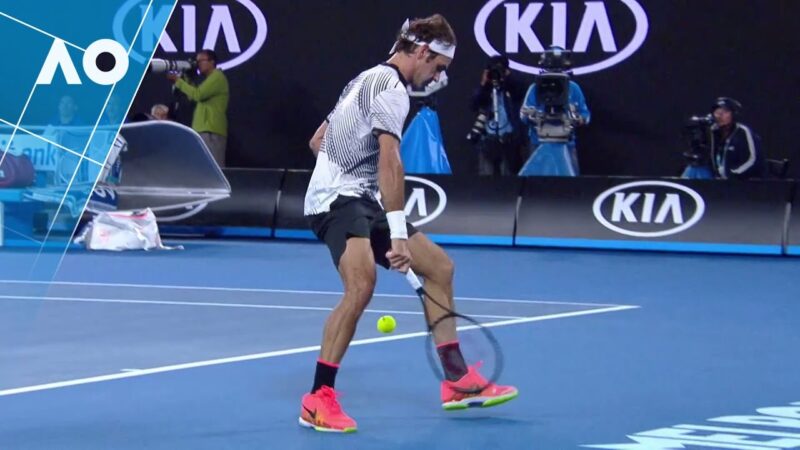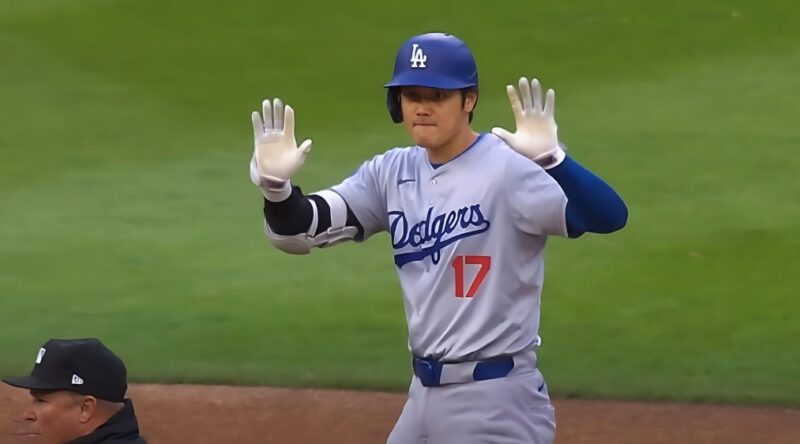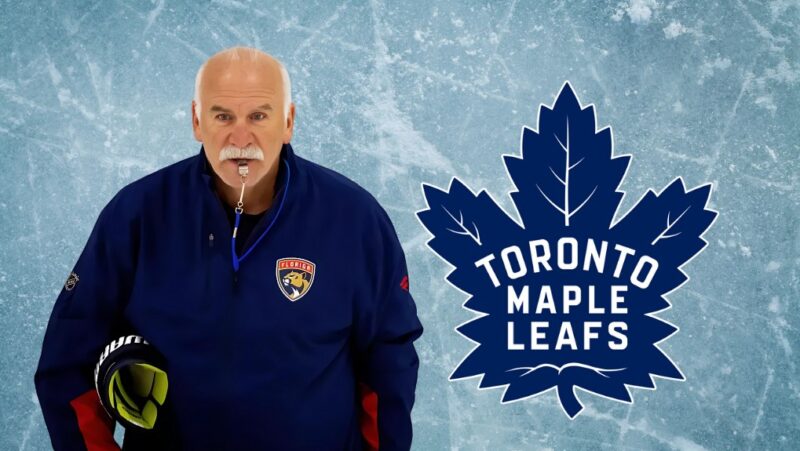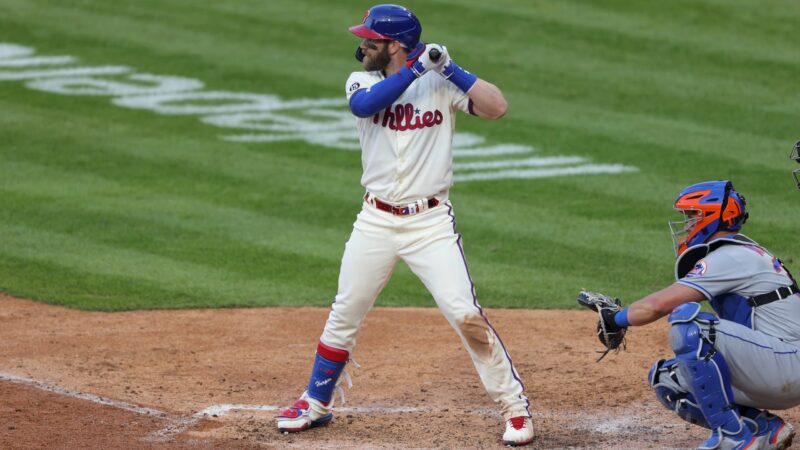If the between-the-legs shot goes mainstream, can it still be the coolest move in tennis?
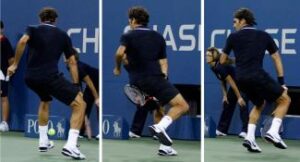
An event brought together the game of tennis with the cultural study of cool earlier this month. It happened on a court situated at the foot of the Santa Rosa Mountains during an Indian Wells match contested by two obscure players that was watched live by perhaps fifty people. History began when Dudi Sela served the ball to Amer Delic, who lofted a backhand deep down the center of the court. Sela chased it down, having only the time to poke his racket through his legs and hit the ball with his back turned to the net. One tweener. After Delic’s return and the proceeding shot by Sela, Delic chased the ball beyond the baseline and hit the ball with his racket between his legs. Two tweeners.
The tennis blogosphere says that this marked the first time two professional players had each successfully hit a between-the-legs shot, known affectionately and no less awkwardly as a “tweener,” in the same point. Such a development should come as little surprise in this golden tweener age when Rafael Nadal, Novak Djokovic, Kei Nishikori, Bob Bryan, Francesca Schiavone, and others have completed one in the last two years. Even Barack Obama tried it at an Easter-themed tennis event last spring.
Everyone’s doing the tweener and everyone’s broadcasting the execution of them, a development that leads to an important question: Does that make the coolest shot in sports less cool?
***
The entire world had a Federer Moment* in September 2009 at the U.S. Open. I was at my house watching Roger Federer play in the semifinal against a Djokovic who had not yet conquered the ATP when I screamed, “Oh my God!” A roommate burst in, saying he thought someone had died. In fact, we had witnessed something immortal: Djokovic, at the net, lobbed the ball over Federer, who retreated deep into the right corner of the court. As he went back, I knew he would try for a tweener, but I expected it to be a lame pop fly that soared out of bounds or directly back to Djokovic. The ball instead sailed over the net like a well-placed passing shot.
*The great David Foster Wallace wrote that a Federer Moment happens when the play of Federer causes your jaw to drop, your eyes to protrude, and you produce a sound so loud that it requires someone in the next room to walk in and make sure you are OK.
Djokovic covered his mouth with his hand. Federer leapt and smiled, displaying the disposition of someone who had the audacity to attempt a previously unexplored dare and triumphed. But Federer didn’t invent the tweener. Kind of like the Internet, there is no consensus on the inventor, just a lot of people who believe they were the first, namely 1970s stars such as Yannick Noah, Guillermo Vilas and Ilie Nastase. Boris Becker continued its use in the 80s and Andre Agassi in the ’90s.
Federer did revolutionize it. Before his US Open winner, the tweener was largely seen as a wasted shot. I remember watching a match a few years ago called by John McEnroe. Richard Gasquet sprinted from the net to the baseline to chase down a deep lob. Before he had the racket all the way through his legs, McEnroe was pleading, Don’t do it, Don’t do it! Consensus was that the more successful approach would be to turnaround halfway and hit a forehand.
The tweener then was known for being cool, but cool can only take you so far. For the tweener to explode in popularity, it needed to be seen as a real shot—if not a secret weapon, then at least a useful tool—and not just a frivolous, last-ditch stunt. It needed the right player to execute it at the right time in front of the right audience. Vilas, Noah and Nastase had the fame and cache, but their shots were broadcasted to a limited viewership. Becker and Agassi had more exposure, but the YouTube era had not yet dawned. Federer provided the perfect scenario to foment the sea change of a shot: he was the No. 1 player in the world, arguably the greatest of all time, and he pulled off the tweener in the semifinal of a Grand Slam during primetime on a Sunday against an apt Djokovic, and holy shit, that shot looked awesome. More than two million people watched it on YouTube. And then, holy shit, Federer did the same thing a year later at the US Open. More than two million people watched it on YouTube.
This tweener was a little different. It didn’t find its way between the white lines over the head of an opponent waiting, stunned, at the net. It sizzled off Federer’s racket with the precision and angle of a forehand. It tricked Brian Dabul, who was waiting, stunned, at the BASELINE. “That was definitely a wow moment for tennis players, not just for fans, and the scary part was that it looked like he actually knew where he was hitting,” former player and USTA coach Tom Gullikson told the New York Times. With Federer’s shot, the tweener had reached a tipping point.
***
Of all the recent practitioners—Nadal, Schiavone, et al—Andy Murray stands out [as an unusual case. In 2011, he provided his own twist to the tweener, successfully attempting it facing the opponent rather than having his back turned, and by adding a scissor kick, making it less likely he would bash his shins with his racket and more likely that the ball would find its way through. [[^It did.]] Murray first performed this at the AEGON Championships, a warm-up for Wimbledon. Before Wimbledon, he told reporters he planned to do it again, and he did. In his third round match against Ivan Ljubicic, Murray sent a tweener shot at the net when he could have easily pushed the ball over for a routine point. McEnroe was announcing the match for the BBC, and he ripped into Murray. “That’s pretty annoying if you’re the opponent,” he said.
I was mad, too, just not for the same reason as McEnroe And when Murray responded to a Kei Nishikori tweener at the Australian Open this year with a failed attempt of his own scissor tweener a game later, I was mad again. After seeing premeditated celebrations involving Terrell Owens’ Sharpie and Joe Horn’s cell phone, practiced trick shots used during Wimbledon and Australian Open matches don’t register too high on the ridiculous showmanship scale. Murray, though, did have other options. He hit a tweener shot because he wanted to play to the crowd, because he wanted to look cool. And that’s what bothered me about his tweener and some of the tweeners we’ve seen in the last two years.
You can’t try to be cool in tennis. Cool is spontaneous. Federer admitted to practicing the tweener, as any player regardless of age or skill level does, but he hit his shots on the run, an improvisation of last resort. A secret weapon; break glass only in an emergency. If pros head onto the court planning to hit a tweener, the shot becomes victim to overuse and devolves into a set piece in competition’s ugly second cousin: the exhibition.
In other sports, planned style intertwines seamlessly with the game. In basketball, a player on a breakaway has no strategic reason to attempt a windmill dunk instead of a regular two-handed jam. He can perform this feat with little risk involved, turning an ordinary play into an appreciated highlight.
Tennis feels different. For one thing, there are no “breakaways.” Pretty much unless the opponent falls down, unable to return a shot, every moment in a point is hotly contested. A player has little room to veer from the routine. Instead, highlights arise when players make ordinary shots that appear extraordinary based on other variables like angle, how far they have to chase the ball and so on. The forehand, slice, volley, or backhand can appear spectacular depending on the circumstance.
In 2002, Federer and Andy Roddick played a point so memorable that it has its own description on the Federer-Roddick Wikipedia page even though it’s from a relatively insignificant indoor match in Basel. During the point, Roddick pounds an overhead deep into the left corner of the court. It would have been a winner 99 percent of the time, but Federer chased it down and hit an impossible shot for a winner. Roddick was so surprised and disgustedly impressed that he tossed his racket over the net. Federer picked it up for him and patted him on the waist when he came to retrieve it as the fans clapped wildly. Technically, Roddick hit an overhead, and Federer responded with an overhead. But because Federer had to run quickly to a spot several feet beyond the baseline, jump, extend his reach, and then hit that overhead with the requisite amount of slice that would allow the ball to curve in, it became a highlight.
In tennis, unknown conditions coupled with a tennis player’s execution of the right shot precipitate the best highlights, not a pre-match decision on the part of the athlete, in the case of Murray. To purposely attempt something spectacular in tennis, i.e. the tweener, not only feels unnatural when executed at unnecessary times, it can be counterintuitive to the goal of winning the point because of the risk involved in pulling it off.
At Indian Wells, Sela needed to hit a tweener, but Delic’s was more of a gimmick. He jogged to the ball, breaking stride so he could hit a much tougher shot through his legs. He provided us with a slow motion picture of what it looks like to try too hard
***
Though the YouTube era has allowed for the mass availability of cool moments, ideas, and jokes we might not otherwise see, it has also precipitated their dilution. Viral sensations are awesome at first, OK when the craze reaches fever pitch and then, finally, overplayed and forgotten, kind of like those “Shit People Say” videos. Overexposure rules sports coverage these days and has for a while.
In The Conquest of Cool, Thomas Frank argues that cool had become less an organic concept than a product manufactured and served to consumers by creators of mass culture. In the case of sports, those creators would include conglomerates like ESPN and Nike. Before the 2010 US Open, a year after Federer’s first tweener and just before his tweener that changed the tennis world, Federer appeared in a commercial for the US Open series and ESPN in which he dissected his famous shot.
ESPN had paid the USTA $140 million for the rights to televise the US Open and related events from 2009 to 2014. In the commercial, Federer is wearing a Nike shirt and shorts as well as a sparkling watch. Nike pays him $13 million a year. The watch? We can only assume it’s a Rolex. Federer earns $1.5 million annually to endorse their “timeless” luxury watches.
The USTA uploaded the ad on YouTube, calling the shot Federer’s “signature tweener.’” At the end of the ad, Federer says, “Please don’t try this at home.” What ESPN and the USTA meant, though, was try anything you want at home as long as you spend a couple of hours of your day watching our tennis coverage. Cool has been commercialized in tennis and all sports forever, but doing so with the tweener turned a rarely seen shot into the stuff of fads.
Because the tweener was deemed extraordinary—and rightfully so—ESPN would happily force-feed replays of it to an audience of sports fans until they get desensitized by the ubiquity. Similarly, a capable tennis player who can execute the tweener or other trick shots with regularity stands to appear on more highlights, which could lead to more lucrative deals with these producers of cool (think Gael Monfils). Enjoyable sporting moments, like the supposed historical two-tweener point between Sela and Delic, quickly come across as ordinary, if not outright forced. Seen through this spectrum, the spontaneity and magic of a beautiful play fade away. And that sucks.
***
On March 18, I watched the SportsCenter Top 10 highlights for the first time in years, having largely tuned out the show for reasons of time and taste. The No. 2 play was by Lionel Messi. In the box, he nutmegged a Sevilla defender and then proceeded to loft the ball over the keeper for a goal perfectly placed in the upper corner of the net.
The nutmeg has now been done a gazillion times by soccer players of all ages and skill levels and probably by tons of people who had no real use for it other than to just show off. Yet when I saw Messi nutmeg an adept defender, I had a reaction similar to a Federer Moment. I yelled.
Messi’s best option was the nutmeg, and his athletic brilliance allowed him to execute. When a play arises from an area of an athlete’s mind he or she had not discovered until that very second because of the exact setting and circumstances, and comes with such pure intentions, it can transcend the overexposed, commercialized mess.
Watching those Federer shots that started the tweener craze now, the feel is the same, regardless of how many times someone else abuses the shot’s artistry or how many times he showcases it in a way that helps stuff the pockets of the world’s producers of culture. The tweener still gives fans a reason to get excited, and more of them, replayed for profit or otherwise, has the appreciated byproduct of attracting more fans to a niche sport. Even though Murray may break out a tweener at an unnecessary moment, the shot can feel particularly special when it’s spontaneously completed to perfection, as it was by Federer. In that moment, he is an athlete who has nowhere to go, no time to think and yet all the confidence in the world. His instincts spur him to make the best choice, which happens to be hitting a freaking tennis ball between his legs, and, holy shit, it is just … cool.

